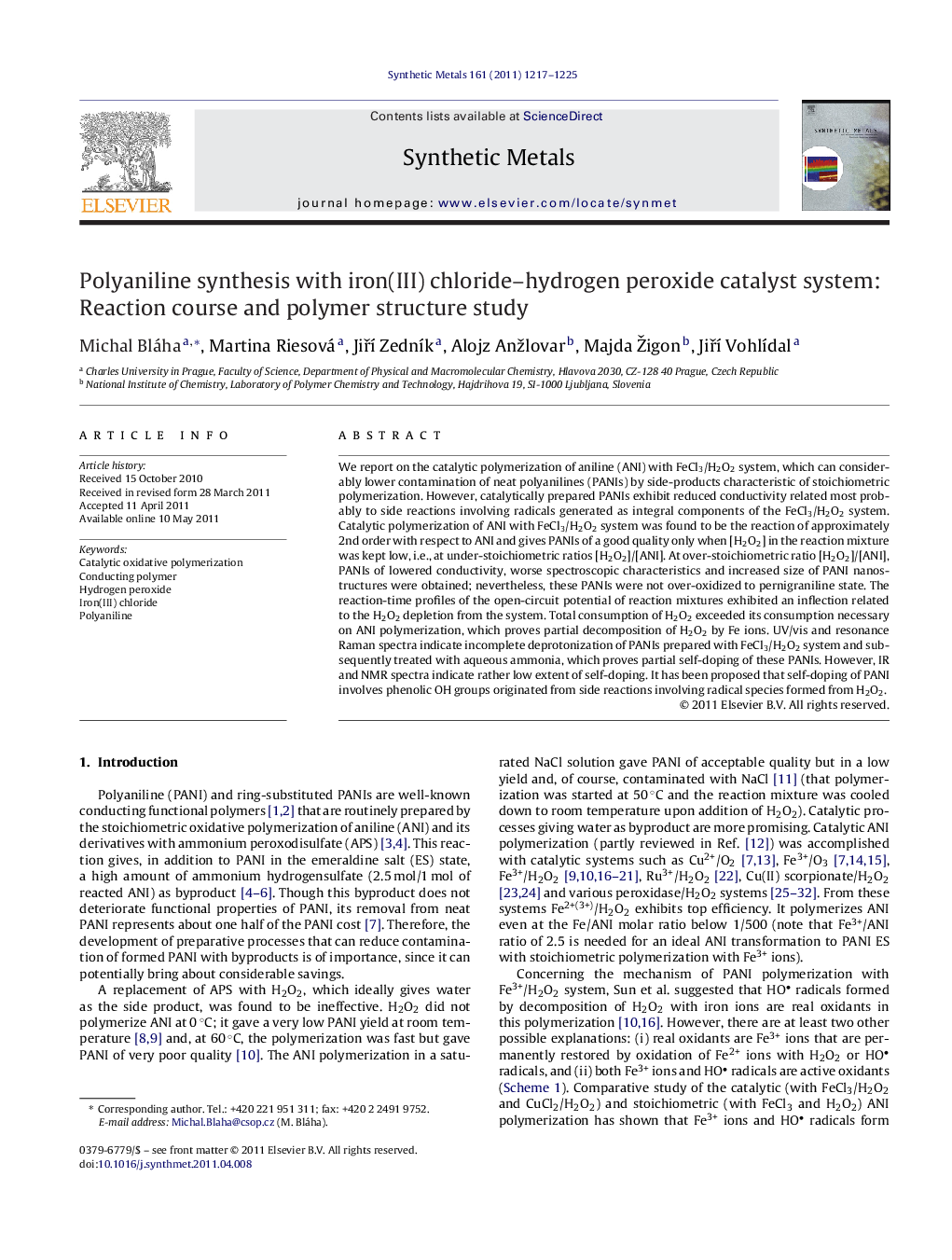| کد مقاله | کد نشریه | سال انتشار | مقاله انگلیسی | نسخه تمام متن |
|---|---|---|---|---|
| 1442003 | 1509430 | 2011 | 9 صفحه PDF | دانلود رایگان |

We report on the catalytic polymerization of aniline (ANI) with FeCl3/H2O2 system, which can considerably lower contamination of neat polyanilines (PANIs) by side-products characteristic of stoichiometric polymerization. However, catalytically prepared PANIs exhibit reduced conductivity related most probably to side reactions involving radicals generated as integral components of the FeCl3/H2O2 system. Catalytic polymerization of ANI with FeCl3/H2O2 system was found to be the reaction of approximately 2nd order with respect to ANI and gives PANIs of a good quality only when [H2O2] in the reaction mixture was kept low, i.e., at under-stoichiometric ratios [H2O2]/[ANI]. At over-stoichiometric ratio [H2O2]/[ANI], PANIs of lowered conductivity, worse spectroscopic characteristics and increased size of PANI nanostructures were obtained; nevertheless, these PANIs were not over-oxidized to pernigraniline state. The reaction-time profiles of the open-circuit potential of reaction mixtures exhibited an inflection related to the H2O2 depletion from the system. Total consumption of H2O2 exceeded its consumption necessary on ANI polymerization, which proves partial decomposition of H2O2 by Fe ions. UV/vis and resonance Raman spectra indicate incomplete deprotonization of PANIs prepared with FeCl3/H2O2 system and subsequently treated with aqueous ammonia, which proves partial self-doping of these PANIs. However, IR and NMR spectra indicate rather low extent of self-doping. It has been proposed that self-doping of PANI involves phenolic OH groups originated from side reactions involving radical species formed from H2O2.
► FeCl3/H2O2 system gives nearly standard polyaniline if H2O2 concentration is kept low.
► Catalytic decomposition of H2O2 with Fe ions induces significant side reactions.
► Increasing H2O2 concentration causes or enhances partial self-doping of polyaniline.
► Self-doping was proved by UV/vis and resonance Raman but not by IR and NMR spectra.
► Phenolic groups are supposed to be acidic groups responsible for self-doping.
Journal: Synthetic Metals - Volume 161, Issues 13–14, July 2011, Pages 1217–1225